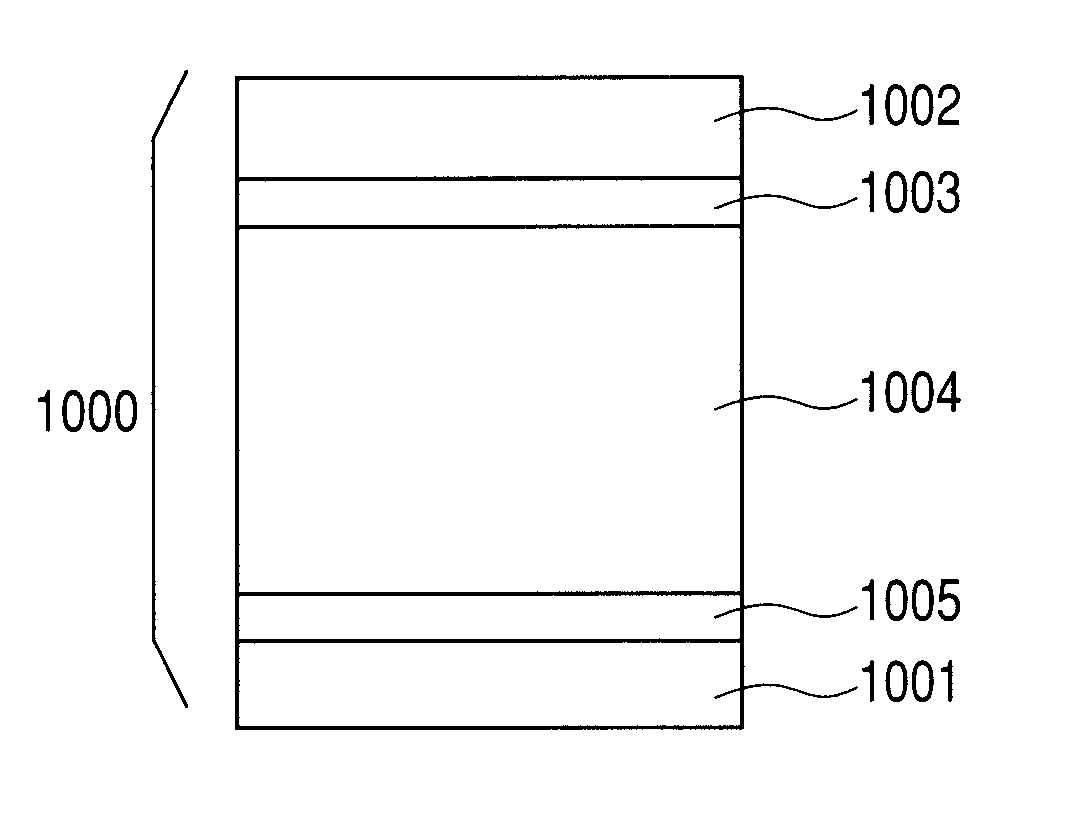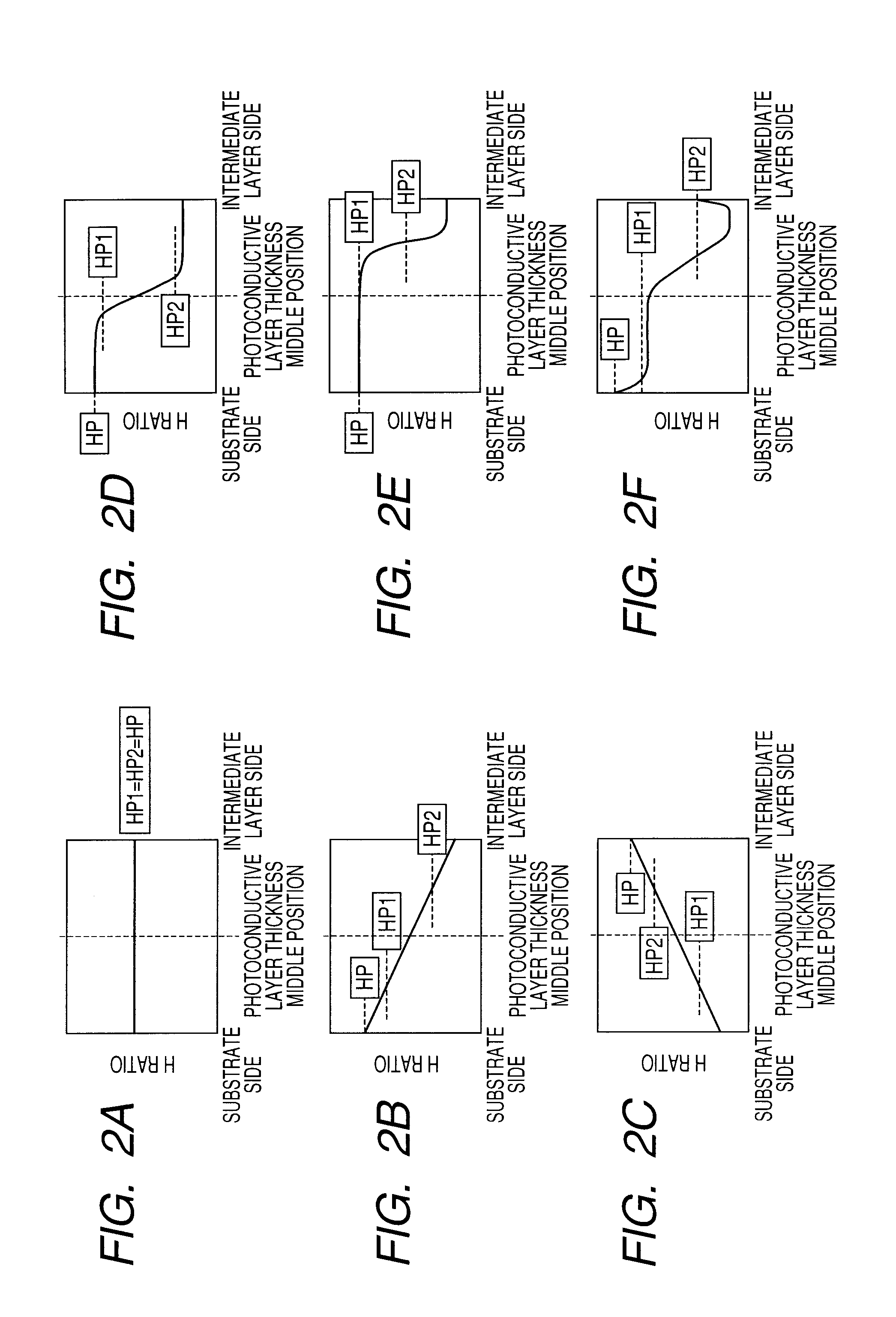Electrophotographic photosensitive member and electrophotographic apparatus
a photosensitive member and electrophotography technology, applied in the direction of electrographic process apparatus, instruments, corona discharge, etc., can solve the problems of image failure, letter blurred or white patches without being printed, occasionally caused image deletion, etc., to achieve superior resistance to high-humidity deletion, abrasion resistance and layer exfoliation resistance
- Summary
- Abstract
- Description
- Claims
- Application Information
AI Technical Summary
Benefits of technology
Problems solved by technology
Method used
Image
Examples
experimental example 1
[0085]A sample of the electrophotographic photosensitive member was produced by forming each layer on a cylindrical substrate (cylindrical substrate made from aluminum, which had a diameter of 80 mm, a length of 358 mm and a thickness of 3 mm, and was mirror-finished) by using a plasma treatment apparatus with the use of a high-frequency power source illustrated in FIG. 3, which uses an RF band. The forming conditions of a charge injection inhibition layer at this time are shown in the following Table 1, the forming conditions of a photoconductive layer are shown in the following Table 2, the forming conditions of an intermediate layer are shown in the following Table 3, the forming conditions of a surface layer are shown in the following Table 4, and the stacking conditions in the samples of the produced electrophotographic photosensitive member are shown in the following Table 5. As for the layer structures of the electrophotographic photosensitive members shown in the following t...
examples 8 to 12
[0127]Positively chargeable a-Si photosensitive members were produced on a cylindrical substrate, on conditions of the following Tables 28 to 33, in a similar way to those in Experimental Example 1. At this time, the adhesive layer and the charge injection inhibition layer were formed on conditions shown in the following Table 27. In addition, the produced number of electrophotographic photosensitive members was two cylinders for each layer-forming condition (film-forming condition).
TABLE 27Layer-formingLayer-formingconditioncondition No. ofNo. of adhesivecharge injectionlayerinhibition layerN1U1U2U3SiH4 [mL / min (normal)]350350350350H2 [mL / min (normal)]750750750750B [ppm] (with respect to Si)1500150015001500NO [mL / min (normal)]——10—CH4 [mL / min (normal)]———500N2 [mL / min (normal)]750———High-frequency electric power (W)400400400400Internal pressure (Pa)40404040Substrate temperature (° C.)260260260260
TABLE 28Example 8Layer-ChargePhotoconductive layerIntermediate layerSurface layerformin...
PUM
 Login to View More
Login to View More Abstract
Description
Claims
Application Information
 Login to View More
Login to View More - Generate Ideas
- Intellectual Property
- Life Sciences
- Materials
- Tech Scout
- Unparalleled Data Quality
- Higher Quality Content
- 60% Fewer Hallucinations
Browse by: Latest US Patents, China's latest patents, Technical Efficacy Thesaurus, Application Domain, Technology Topic, Popular Technical Reports.
© 2025 PatSnap. All rights reserved.Legal|Privacy policy|Modern Slavery Act Transparency Statement|Sitemap|About US| Contact US: help@patsnap.com



